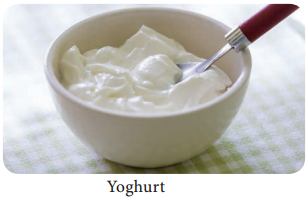Learninsta presents the core concepts of Microbiology with high-quality research papers and topical review articles.
Food Microbiology of Yogurt – An Overview
Yoghurt or Bulgarian Milk
Yoghurt is derived from a Turkish word ‘Jugurt’ which is the most popular fermented milk in the world now – a – days. It is made from milk, skimmed milk or flavoured milk. For the preparation of yoghurt, the milk should be free from contamination. The solid content (not fat should be between 11 – 15% which can be obtained by adding skin or whole milk powder in fresh milk that normally contains 8% solids.
The product can be further improved by adding small amount of modified gums which bind water and impart thickening to the product. At this stage the size of the fat particles in the milk should be around 2µm because this improves the milk’s viscosity, product’s stability. The milk is then heated at 80-90ºC for 30 min., starter culture is added to it.
Heating improves the milk by inactivating immunoglobulins, remove excessive oxygen to produce micro aerophilic environment which support the growth of starter culture. Besides, heating also induce the interactions between whey or serum proteins and casein which increase yoghurt viscosity.
The milk is now cooled to 40-43ºC so as to allow fermentation using starter organisms such as Streptococcus salivarius sub sp. thermophilus and Lactobacillus delbruckii sub sp. bulgaricus together at a level of 2% by volume (106 – 107 cfu/ml).
It is to be carried out for about 4h during which lactose is converted into lactic acid, pH decreases to a level of 6.3 – 6.5 to 4.6 – 4.7. The flavour in yoghurt is due to acetaldehyde which should be present at 23 – 41 mg/kg (Figure 5.7).
